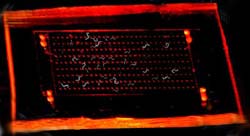Living organisms are an enormous reservoir of natural compounds potentially active against viruses, bacteria or cancerous cells, that could lead to the development of new medicines. Out of about 145 000 natural substances described today, 10% come from marine organisms. Among the few such organisms studied for their chemical composition, sponges of the genus Phloeodictyon (Haploscleridae) collected in shallow New Caledonian waters during campaigns of the programme “Marine Substances of Biological I
UCSF researchers have found that some HIV patients treated with antiretroviral therapy early after infection do test negative, at some point, for the virus. Study findings showed this result in six of 87 patients.
“First, these patients are not cured. When these patients went off therapy, HIV virus levels rebounded. These results do show that with effective early treatment that reduces the virus to very low levels, the immune system may have less antibody response to HIV,” said the study&#
A natural mutation of a gene that helps regulate the reactivity of the immune system is a major contributor to type 1 diabetes, Medical College of Georgia researchers have found.
The newly discovered gene, SUMO-4, controls the activity of NFêB, a molecule that in turn controls the activity of cytokines, proteins that regulate the intensity and duration of the immune response, according to research that will be published in the August print issue of Nature Genetics and online July 11.

Very Large Telescope Unravels New Population of Very Old Massive Galaxies
Current theories of the formation of galaxies are based on the hierarchical merging of smaller entities into larger and larger structures, starting from about the size of a stellar globular cluster and ending with clusters of galaxies. According to this scenario, it is assumed that no massive galaxies existed in the young universe.
However, this view may now have to be revised. Using the multi-mode F

Organisms ranging from bacteria to humans navigate environments that can contain dangerously too little or too much oxygen. Yet, scientists know little about how animals sense oxygen levels around them.
Researchers from the Berkeley and San Francisco campuses of the University of California have now discovered how the nematode C. elegans senses oxygen levels in order to steer clear of surrounding areas that are too low or too high in oxygen.
In the process, the researchers also di

Research aimed at teasing apart the workings of RNA enzymes eventually may lead to ways of monitoring fat metabolism and might even assist in the search for signs of life on Mars, according to University of Michigan researcher Nils Walter. His latest work was published online in the Proceedings of the National Academy of Sciences June 24.
Walter and associates at U-M and colleague Xiaowei Zhuang and associates at Harvard University, use techniques that allow them to study single molecules